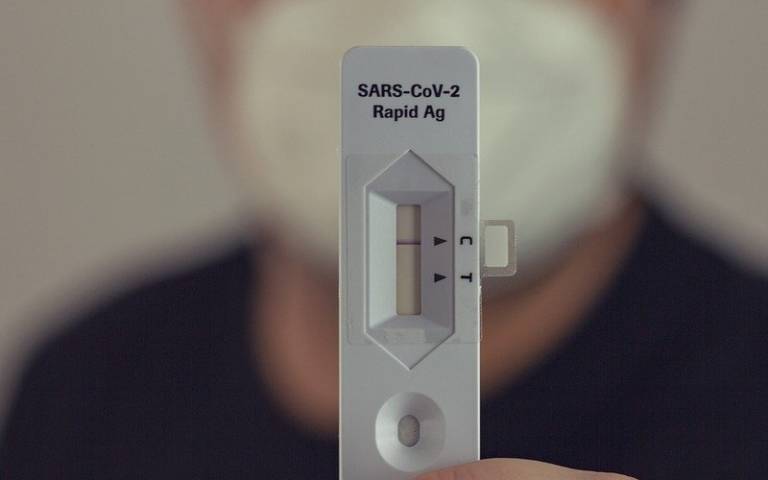Lateral flow tests detect most people at risk of transmitting Covid-19
29 October 2021
Lateral flow tests are more accurate than previously reported and cannot be compared directly to how PCR tests work, finds a new paper led by Professor Irene Petersen (UCL Institute of Epidemiology & Health Care).

The peer-reviewed paper, published today in Clinical Epidemiology, uses a new formula to show that lateral flow tests (LFTs) are likely more than 80% effective at detecting any level of Covid-19 infection and likely more than 90% effective at detecting those who are most infectious when using the test. This level of accuracy is much higher than some previous studies have suggested* and the authors say the tests are a reliable public health tool in stopping the spread of the virus.
The researchers from UCL, Liverpool University, Harvard University and the University of Bath highlight that LFTs work in a very different way to polymerase chain reaction (PCR) tests and cannot be compared ‘like for like’. LFTs detect material from the surface proteins of the virus and are very likely to give a positive result when someone is infectious whereas PCR tests detect the virus’ genetic material, which can be present for weeks after a person is no longer infectious.
Lead author, Professor Irene Petersen (UCL Institute of Epidemiology and Health Care), explained: “Previous studies comparing the reliability of lateral flow tests and PCR tests could be potentially misleading because a PCR test is a marker of having been infected at some point within a certain window of time and does not necessarily mean someone is infectious when testing positive.
“In most validation studies, individuals were tested simultaneously with LFTs and PCR tests, with PCRs being used as a gold standard to say someone is ‘positive or negative’. The sensitivity of the LFTs was therefore evaluated by their ability to identify the same cases that the PCRs picked up. However, this is like comparing apples and oranges.”
The paper presents a formula for calibrating the sensitivity of LFTs and gives an illustrative example from a study in Liverpool. In the Liverpool study a head-to-head validation suggested the sensitivity of LFT was only 40%.** However, after taking into account the differences between the tests and the biology of Covid-19 the UCL-led team suggests that, in reality, the sensitivity of the typical LFT in being able to identity someone who is likely to be infectious, is above 80%.
Professor Michael Mina (Harvard School of Public Health) said: “There is a spectrum of infectious amounts of the Covid-19 virus and we show that LFTs are likely to detect cases 90-95% of the time when people are at their most infectious. The tests could achieve even 100% sensitivity when viral loads are at their peak and therefore catch nearly everyone who is currently a serious risk to public health.
“It is most likely that if someone’s LFT is negative but their PCR is positive then this is because they are not at peak transmissible stage.”
Professor Petersen added: “As LFTs are becoming widely used in schools, workplaces and for admittance to venues such as those used for large events, it is important that health professionals and the public have clear information about the operating characteristics of the tests. We have demonstrated that the absolute sensitivity to detect SARS-CoV-2 antigens is likely high with LFTs.
“To improve our understanding of their characteristics, longitudinal studies where individuals, and ideally contacts of cases, are tested daily by LFTs and PCR tests would help to further understand false negatives (and false positives) and, importantly, the time differences of between turning PCR positive, LFT positive, and symptom onset.”
The authors acknowledge that the sensitivity of the LFTs is, of course, dependent on sampling errors and experience of the person performing the sampling and the test and that these uncertainties are not taken into account in their formula calibrations.
Links
- Paper in Clincial Epidemiology
- Professor Irene Petersen's academic profile on Iris
- UCL Epidemiology and Health Care
Image
- Source: Pixabay Credit: Bastion Riccardi (CC 2.0)
Media contact
Rowan Walker
Tel: +44 (0) 203 108 8515
Email: rowan.walker [at] ucl.ac.uk
Read: BBC News, More: Telegraph, Times (£), Sky News, Mirror, UCL News
 Close
Close

